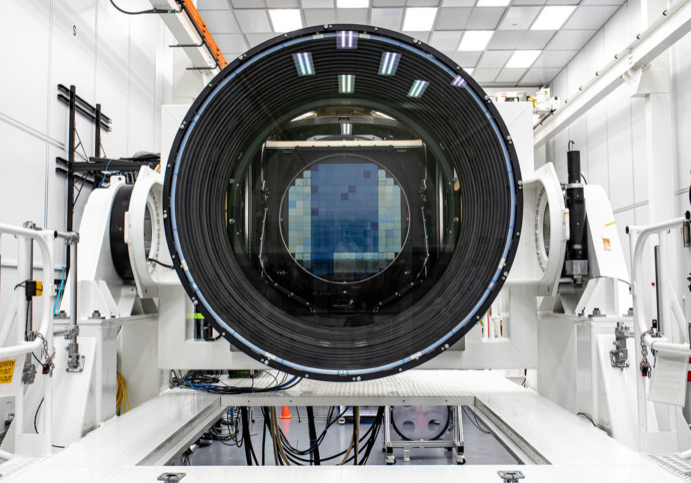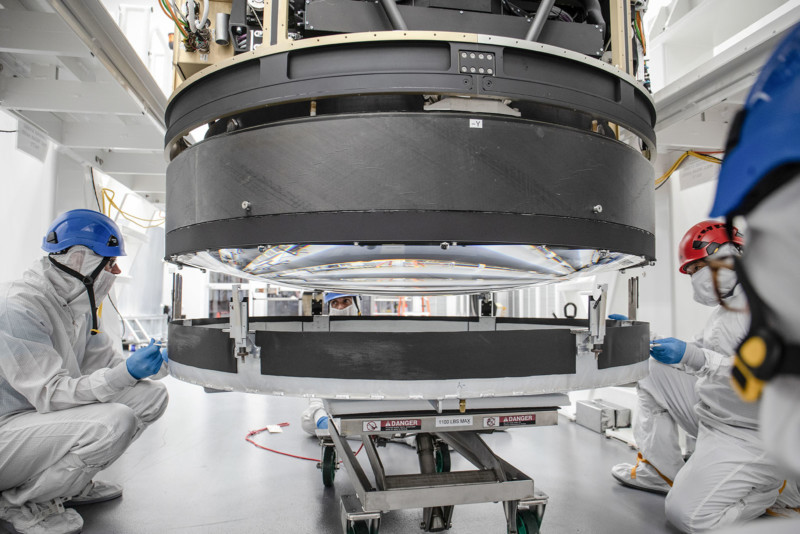
Here is the World’s Biggest Camera, at 13×7 Feet & 3,2 Gigapixels
News | By Stephan Jukic | October 6, 2022
We’ve covered many awesome new cameras emerging on the market here. In quite a few of these releases, the resolution definitely impressed, but not quite as much as what researchers at the SLAC National Accelerator Laboratory have done.
These scientists, who certainly aren’t SLACkers, are nearly done with constructing what they call the Legacy Survey of Space and Time (LSST) Camera.
Aside from being a device for scanning the skies in deep new ways, it’s also the world’s absolute biggest literal optical camera due to its gargantuan lens and the 3,200-megapixel sensor nestled behind it.
This definitely won’t be something you’d lug along for some idle nature photography; the LSST weighs just over 3 tons and is the size of a car.

Image credits: LSST Camera team/SLAC National Accelerator Laboratory/Rubin Observatory
Furthermore, its front lens has a diameter of 5 feet (1.57 meters), and right behind it, the immense 3,200MP sensor needs to be kept cooled to a temperature of -100 Celsius (-148 Fahrenheit) to keep noise at bay while it’s capturing its deep space imagery far off in the dark void above our world.
Needless to say, the cooling system for the lens requires its own additional cargo of supporting infrastructure. In fact, the whole camera does, just to stay properly operational. For these reasons and others, it needs to be installed atop a bigger structure and this is exactly where it’s destined.
The LSST will be housed at the Vera C. Rubin Observatory’s Simonyi Survey Telescope in the remote mountains of Chile, where it’s going to have the job of probing the night sky for the next decade or more.

Vera C. Rubin Observatory in Chile
Its enormous optical capability will give this lens a much closer-than-normal look at particularly mysterious and still unknown astronomical phenomena such as nebulae, dying stars, pulsars and dark matter.
Inside this colossal large-aperture, the wide-field optical camera is a highly sophisticated viewing system that lets the LSST view light from the near-ultraviolet to the near-infrared wavelengths of the electromagnetic spectrum.
The LSST cam contains 189 charge-coupled-device ( CCD) sensors arranged into 21 3-by-3 arrays that are all mounted into slats well behind the lens.
The camera’s 64-centimeter focal plane lets it create a 3.5-degree field of view that translates outward into the sky to a viewing area that’s 40 times the size of the full moon’s space in the night sky.

That’s with each exposure by the way, so it’s easy to see just how many spectacular photos of deep space the camera can capture over a period of frequent use.
The sensor in the camera is for one thing the largest of its kind in the world, but the lens also fits the bill for record size. Its width of 1.57 meters has already been accepted by the Guinness Book of World Records as the biggest ever recorded.
Once it becomes operational, the LSST is going to capture 15 terabytes of visual data per night with its 3.2 Gigapixel sensor. This massive trove of information will be multiplied across the many days of use that it can expect over the next 10 years of planned operation time.
It’s hard to imagine the quantity of digital storage media that this monster camera also depends on in the backend.
In a rather curious recently-conducted test of its photographic abilities, the scientists at SLAC even used the LSST camera to capture a 3.2-gigapixel photo of… highly fractal Romanesco broccoli, which you can see below:

Image credit: LSST Camera team/SLAC National Accelerator Laboratory/Rubin Observatory
The scientists at SLAC have been constructing the LSST for the last seven years and will be taking it from the facility south of San Francisco to its final home in the highlands of Chile in May of 2023. This will happen after final calibration and design touchups are completed.
According to the professional technical site IEEE Spectrum (Institute of Electrical and Electronics Engineers), among these last construction steps are six new filters being created for the lens.
Each of them is coated in such a way that lets only one type of wavelength pass through to the lens and sensor for viewing each of these different specific wavelengths individually as they arrive from space. A mechanism attached to the camera will let it swap out filters and place new ones within 2 minutes.

All of the above and other operations in the LSST camera will require lots of power while generating quite a bit of heat. According to the IEEE, this super camera’s backend electronics generate over 1,100 watts of heat energy during use, requiring a liquid cooling system that’s part of the same one used to keep the sensor in its deep -100 degree chill.
And how will this 13-foot-long, 3-ton camera be transported down to Chile? By a custom-equipped 747 cargo jet that will fly it directly to its destination. There’s no UPSing something like this.

Check out these 8 essential tools to help you succeed as a professional photographer.
Includes limited-time discounts.












